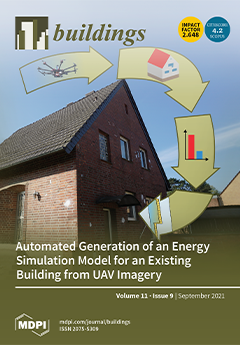The rural residences of Northwest China are characterized by a state of high energy consumption and low comfort due to the limited economic level and awareness of energy-saving compared with the urban residences. To remedy this, appropriate passive design strategies should be adopted
[...] Read more.
The rural residences of Northwest China are characterized by a state of high energy consumption and low comfort due to the limited economic level and awareness of energy-saving compared with the urban residences. To remedy this, appropriate passive design strategies should be adopted first, in order to provide a design mode with low energy consumption and low cost for rural residences under the premise of thermal comfort. In this paper, taking Hanzhong region (Shaanxi Province, China) as an example, we establish a benchmark model based on a field survey and develop an optimization process by combining EnergyPlus simulation software, the MOBO optimization engine, and weighted sum method. The action mechanisms of passive design parameters, including the building orientation, length–width ratio, building envelope parameters, external shading system, and window–wall ratio, on heating, cooling, and total energy consumption are analyzed, and the quantitative relationships between single-parameter and energy consumption are established. Then, the mutually restricted indices of total energy consumption and initial investment cost are taken as optimization objectives, and 17 design parameters are selected as the optimization variables. The NSGA-II algorithm is adopted to conduct the multi-parameter, multi-objective optimization design for rural houses in Hanzhong area, through coupling of the EnergyPlus and MOBO software. In this way, Pareto solutions are obtained and the value distributions of the multi-objectives and design parameters are analyzed. Based on the actual requirements of decision-makers and using the weight method, three design schemes focusing on different performance tendencies are proposed. The results indicate that by using the proposed optimization process, the building energy consumption can be significantly reduced while taking initial investment costs into account, where the energy-saving rate is in the range of 31.9–61.5%. When the EC/IC ratio is 1:1, 2:1, and 1:2, the energy-saving rate can reach 51.5%, 57.8%, and 43.5%, respectively. It can provide a beneficial pattern for the energy-saving design and renovation of rural residences in Hanzhong area of China.
Full article





